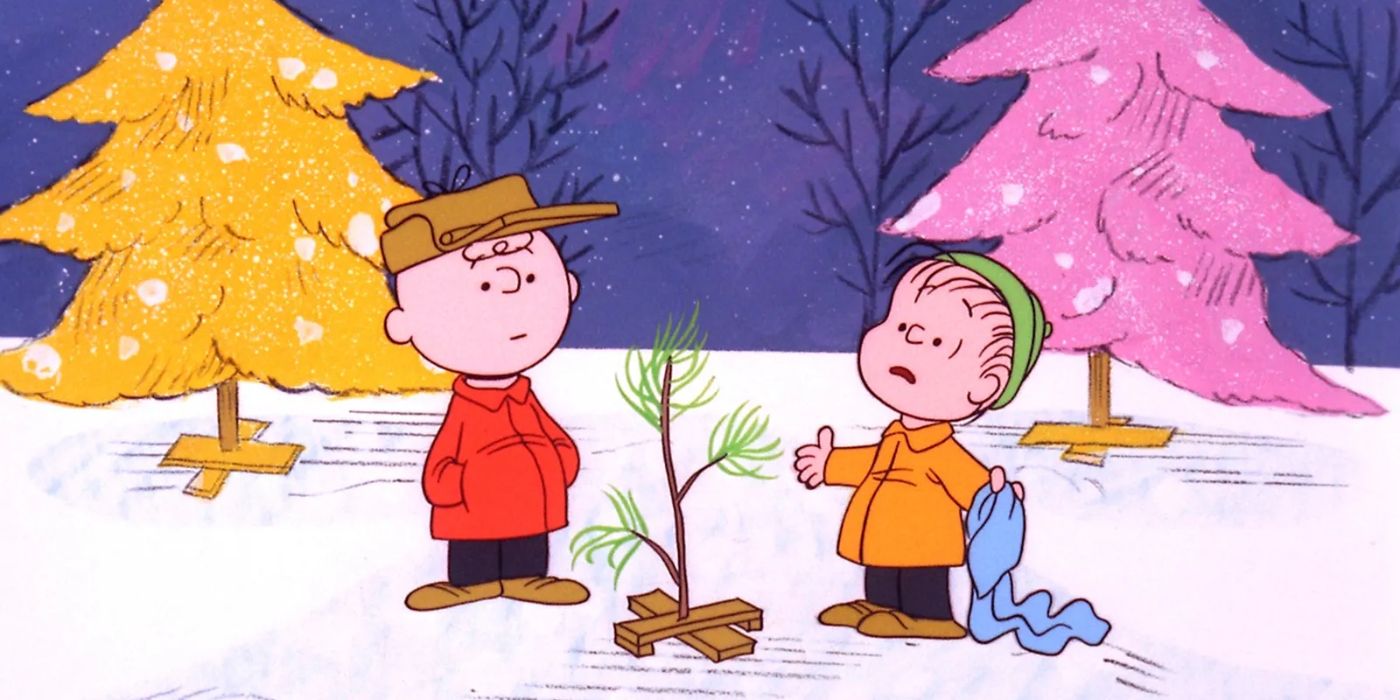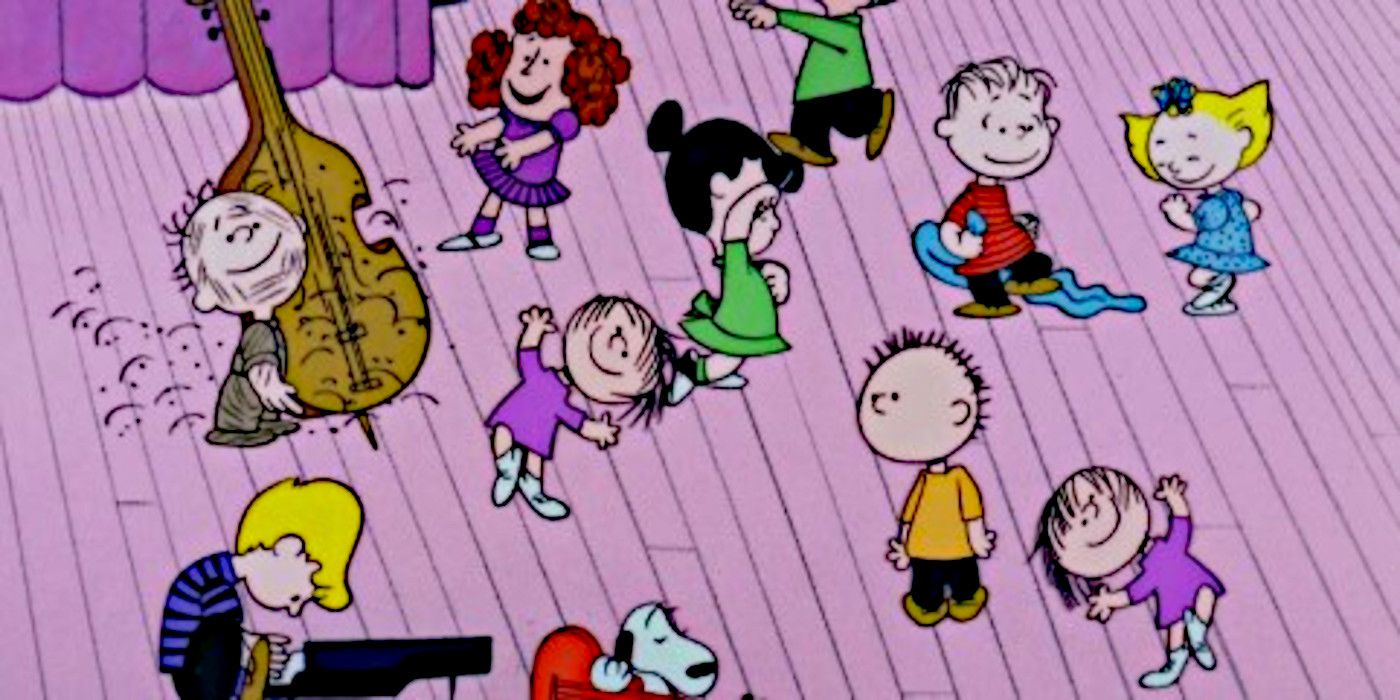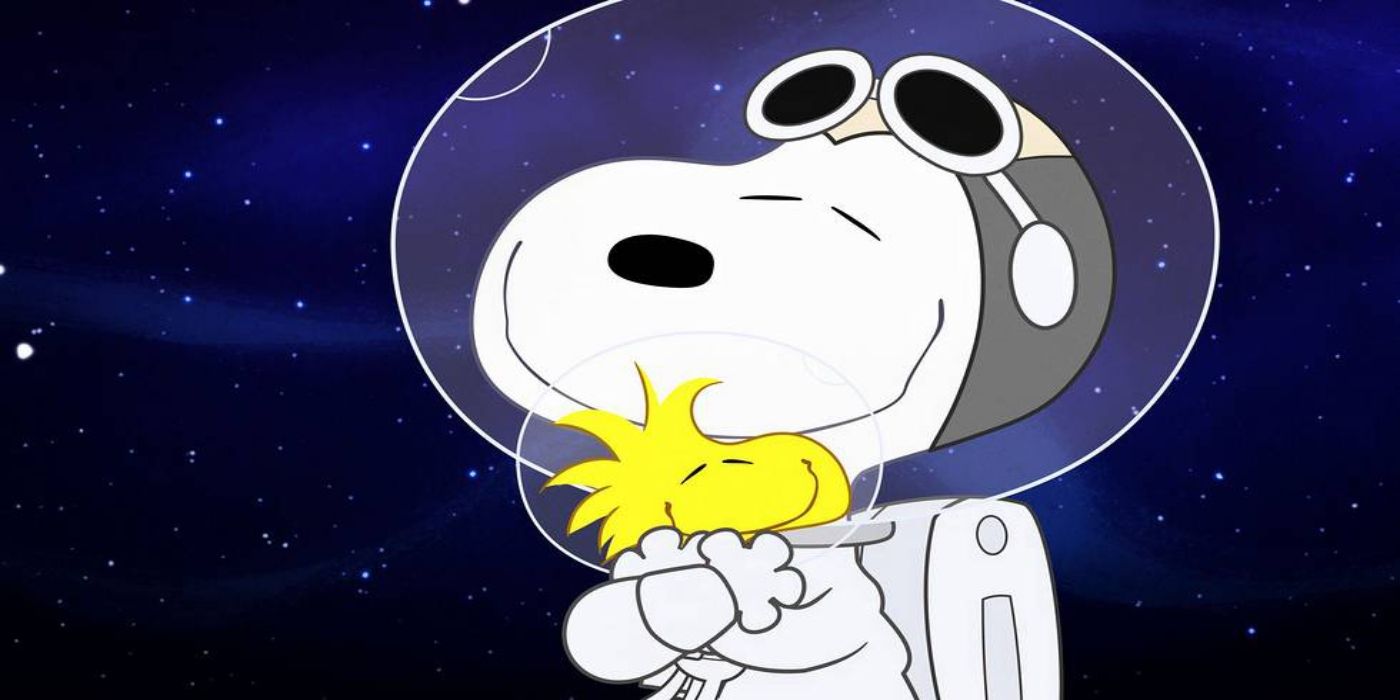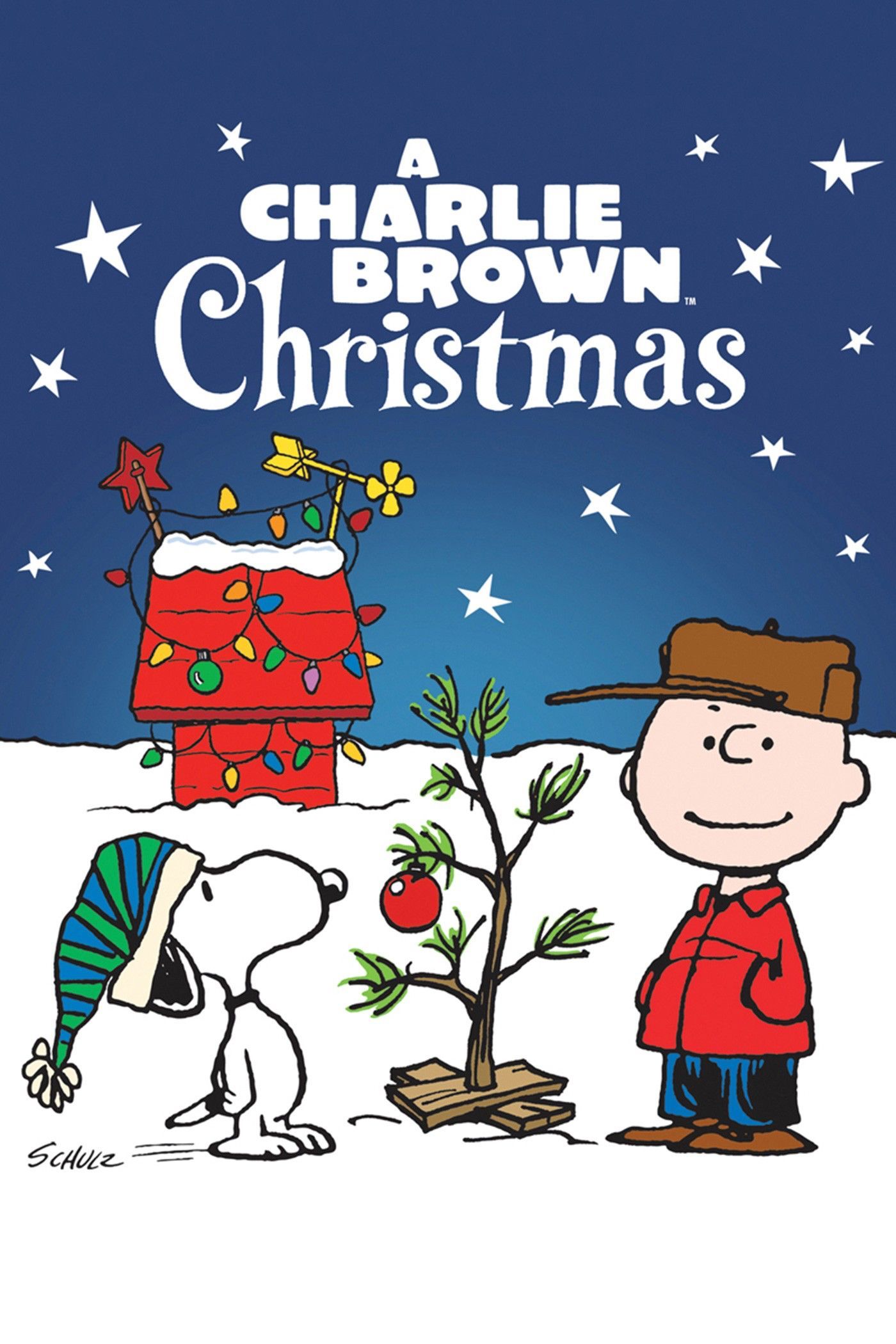The ‘Charlie Brown Christmas’ Scenes That Were Almost Cut
There aren’t many characters out there that have endured in pop culture as long as the Peanuts gang. Charles Schultz’s beloved cast of characters has been delighting readers alike ever since the original comic strips began running in the 1950s. However, many Peanuts fans were first introduced to characters like Charlie Brown, Linus, Lucy, Snoopy, Sally, and Franklin through the series of animated holiday specials that have become yearly favorites for many families. The first, and perhaps best of these Peanuts holiday specials was 1965’s A Charlie Brown Christmas; simply, heartfelt, and brutally honest about how challenging the holiday season can be, A Charlie Brown Christmas is a “family special” that is wide beyond its years.
However, one of the most famous scenes in A Charlie Brown Christmas almost never made it to the screen. The scene from the 1965 classic is often considered a poignant moment in the special, emphasizing the true meaning of Christmas, but initial concerns and disagreements about certain aspects of the special created quite a stir at the time.
What Is ‘A Charlie Brown Christmas’ About?
A Charlie Brown Christmas explores one particularly lonely holiday season for the titular young boy. Charlie Brown worries that partying, commercialization, and the excess fanfare surrounding the holiday season have caused the world to forget what Christmas is actually about. In Charlie Brown’s eyes, Christmas is about giving back and caring for the people around him. This becomes increasingly difficult when he realizes that many of his best friends seem to only focus on the materialistic aspects of the holiday. To remedy his holiday funk, Charlie Brown decides to sign on as the director of a festive play that his friends have all signed up to be a part of. Unfortunately, Charlie Brown finds that the other characters aren’t as willing to go along with his ideas as he had initially expected.
Charlie Brown envisioned a play that would restore the true meaning of Christmas, but it seems like all his friends want to do is play holiday music and dance around. As he grows increasingly dispirited about the whole ordeal, Charlie Brown gives in to Lucy’s demands that the play needs an aluminum Christmas tree to set the right “mood” for the performance. After searching through a Christmas Tree farm for various sparkling, finely crafted fake trees, Charlie Brown selects a small shrub that barely qualifies as a branch. Charlie Brown brings back the quaint tree and only receives jeers and insults from his friends. Humiliated and disheartened, Charlie Brown gives up; however, it’s at this moment of hardship that A Charlie Brown Christmas delivers its most touching moment.
Why ‘A Charlie Brown Christmas’ Is a Classic
A humbled Linus takes center stage and reads the declaration to the shepherds from the Bible word-for-word. After Linus’ words wash over Charlie Brown, he realizes that the message that his misgivings about the holiday are no longer relevant. Charlie Brown doesn’t need to let other people’s feelings about the holiday affect what he does and decides to celebrate Christmas the way he intended.
The segment of Linus reading the passage is quite affecting; it is a surprisingly tender, mature moment within an animated family holiday special that has already spent a fair amount of time dedicated to watching Snoopy and Woodstock goof around. A Charlie Brown Christmas would be a charming, albeit simple holiday special without this scene; surprisingly, this is the moment that the special producers nearly had to cut out of the original broadcast.
The ‘A Charlie Brown Christmas’ Scene Could Have Been Cut
Shortly before A Charlie Brown Christmas was scheduled to be broadcast, a rough cut of the special screened for Schultz, his producers, and the hardworking team of animators. The reaction was unanimously positive, but CBS producers were cagey about the sequence involving Linus reading from scripture. They argued that the scene was “too religious” for a family-animated special and that any overt references to Biblical scripture should be removed to appeal to a wider audience. Schultz was adamant that the scene needed to stay; he felt that the message of universal love was essential to the special, and could not be conveyed in any other way.
Deleting Linus’ big monologue would have ruined A Charlie Brown Christmas, but it wasn’t the only hurdle that the special faced during the lead-up to its initial broadcast. The idea for A Charlie Brown Christmas sprang from a proposed documentary about Schultz’s life, as initially, CBS producers didn’t believe that the Peanuts could lead their holiday special. It was arguedCharlie Brown’s anxieties about the holiday special simply wouldn’t make “good TV”; who wanted to watch a depressed child bemoan the lack of Christmas spirit in the world for 30 minutes? While it’s hard to imagine now, Schultz’s original cartoons had never been previously adapted. It was hard to imagine how a series of humorous sketches could be strung together for a cohesive narrative.
How ‘A Charlie Brown Christmas’ Got to Air Amid Controversy
What followed was an intense production schedule in which animators had to realize the unique characters and world of Schultz’s cartoons in less than six months; they worked off of initial black-and-white storyboards to reach the deadline. Even though it barely made it to air, A Charlie Brown Christmas was instantly heralded as a breakthrough within the animation medium. The special’s success inspired the creation of several additional Peanuts holiday episodes, including It’s The Great Pumpkin, Charlie Brown in 1967, and A Charlie Brown Thanksgiving in 1973. A Charlie Brown Christmas even got a semi-sequel in 1992 with the special It’s Christmastime Again, Charlie Brown, which explored additional adventures with the Peanuts gang during the holiday season.
However, it would be hard to imagine what the special would have looked like without the moment that producers seemed so intent on removing. Linus’ monologue helped differentiate A Charlie Brown Christmas from other holiday animated specials, as it left a message that both children and adults could appreciate. While its success certainly inspired the Peanuts multimedia franchise as it exists today, A Charlie Brown Christmas isn’t just great because of what it spawned. It’s a simple, heartwarming story, and Linus’ beautiful speech epitomized these themes of goodwill and eternal love. As it turns out, that’s what Christmas is all about.
Why Does ‘A Charlie Brown Christmas’ Still Resonate?
A Charlie Brown Christmas has a surprisingly strong cultural reach that expanded far beyond the original comic strip itself. Although there was a time in which Schultz’s original run of stories were among the most highly read comic strips in the world, Charlie Brown and his friends are instantly recognizable to most young viewers, even if they have little-to-no familiarity with their origins. A Charlie Brown Christmas was instrumental in introducing viewers to the world of Peanuts, as the special provides insights into what makes each of the characters unique. The main thrust of the narrative is centered around Charlie Brown’s attempt to find the meaning of Christmas, but there are compelling moments featuring the entire cast; Linus, Lucy, Pig-Pen, Schoeder, Peppermint Patty, and even Violet have moments in which they show genuine compassion for one another. It’s an easy special to slip in when catching up on the best short form holiday content each year.
A Charlie Brown Christmas is surprisingly mature, as many of the Peanuts specials were. While the characters are all in the midst of their own coming-of-age stories, they speak in an articulate, concise way that makes them feel much older. One of the most humorous recurring gags within the entire Peanuts franchise is that the “adult” characters have their dialogue obscured, suggesting that there is a fairly significant generation gap that provides a barrier of communication. When Charlie Brown is facing feelings of self-doubt and isolation, he cannot simply turn to an older member of his community for guidance, and is forced to speak with his peers. The special ultimately has a positive message about the importance of supporting one’s friends and coming together as a community; despite their petty grievances with one another, Charlie Brown’s friends are able to show their support for one another when the stage show threatens to become too chaotic.
Each of the Peanuts holiday specials focus on resolving an issue pertinent to the celebration, in which Charlie Brown recognizes that there is a deeper reason behind the traditions. The concept of being exasperated by the rampant commercialization of the holiday season was fairly radical in the 1960s, especially for a program ostensibly aimed at children; it has only grown more relevant in recent years. A Charlie Brown Christmas recognizes that the opportunity to show love and support for one another is why Christmas is worth celebrating and that the spectacle of lights, decorations, and presents is all secondary. The insight that Linus gives about the meaning of Christmas isn’t just a great way to teach children about the holidays but a message that is intended to resonate just as strongly with their parents.
Where Does the ‘Peanuts’ Franchise Go From Here?
The Peanuts franchise is in an interesting position right now, as the future of the characters rests in the hands of Apple TV+. Apple TV+ certainly has produced a lot of high-quality television shows, including Ted Lasso, Disclaimer, Shrinking, Severance, and Bad Sisters. However, it certainly remains one of the least popular of the major streaming services, as its back catalog of content is far less extensive than rivals like Max and Amazon Prime Video. It’s also an odd place to stake the future of Peanuts because there is relatively little content aimed at children on the Apple TV+ service; comparatively, Netflix and Disney+ have entire subsections of their platform dedicated to family-oriented programming.
Apple TV+ has aimed at exploring the full extent of Peanuts history through new specials that explore the larger ramifications of the characters. The documentary Who Are You, Charlie Brown?, which featured a voiceover by Academy Award winner Lupita Nyong’o, explored how events within Schultz’s own life affected the conception of the Peanuts universe. While the streamer continues to air short form shows like Snoopy in Space and The Snoopy Show, there has also been a concentrated effort to expand upon some of the less-established characters. 2024 saw the release of Welcome Home, Franklin, which put Peanuts’ most recognizable character of color in the hero role. If other future projects are this thoughtful, then there is the potential for Peanuts to once again have a substantial impact on popular culture.
A Charlie Brown Christmas is available to stream on Apple TV+.
Watch on Apple TV+
Source link



